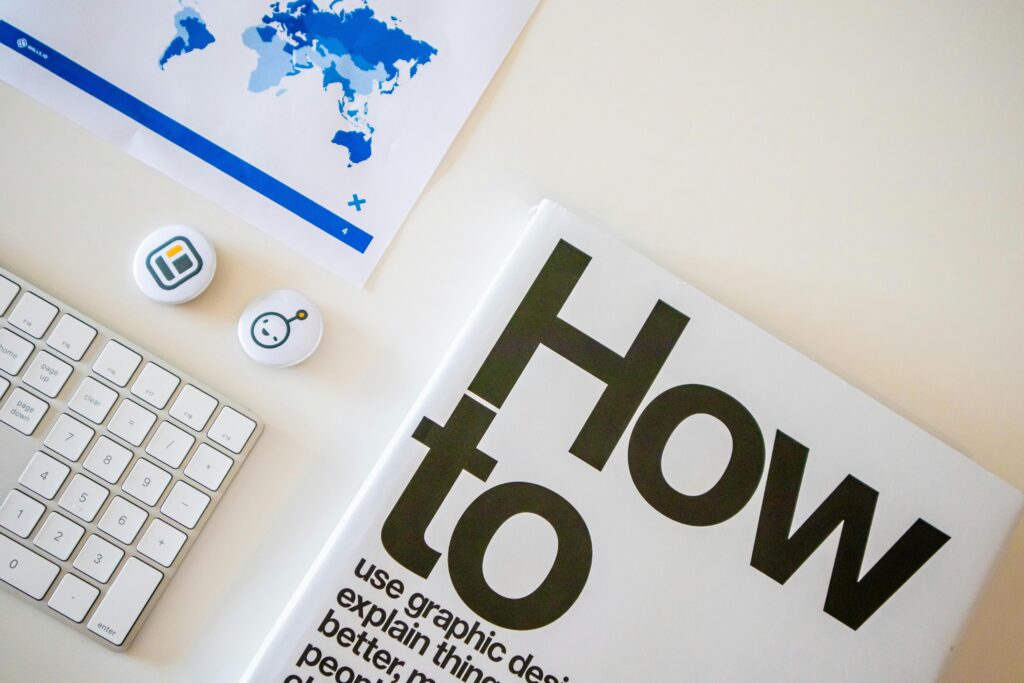5 Steps To Reach Your Money Goals In 2025

Setting money goals when inflation is doing its thing and the economy feels like a rollercoaster?
Yeah, it’s rough. But here’s the thing: it’s not impossible, and I’m living proof of that.
Let me take you back to 2020. Remember when COVID hit and everything just… stopped?
I got furloughed from my job (the kind where you actually have to show up in person, not the laptop-on-the-couch variety), and suddenly, all those financial goals I’d mapped out for the year seemed like a cruel joke.
But instead of throwing in the towel, I pivoted hard. Started hunting for remote work like my life depended on it, because, well, financially it did.
After about a month of relentless applications and a few “we’ll keep your resume on file” rejections, I landed something.
But getting a paycheck again wasn’t enough. I had to get smart about how I managed that money.
And that’s exactly what we’re going to talk about today, the real, practical steps you need to actually reach your money goals in 2026, not just dream about them while strolling through Instagram at 2 AM.
Importance Of Reaching Your Money Goals
Before we jump into the how-to stuff, let’s talk about why this actually matters.
Because honestly, if you don’t have a solid “why,” you’re going to bail when things get tough (and they will get tough).
It Boosts Your Confidence
Ever notice how good it feels when you actually finish something?
That rush you get when you check off a major task?
Now multiply that by about a thousand when it comes to money goals.
When you hit that savings target or finally clear that credit card balance, you’re not just excited, you’re confident.
You start thinking, “Okay, I actually did that. What else can I accomplish?”
It’s like a financial shot of espresso for your self-belief.
It Shows You’re Responsible
Here’s some real talk: being responsible isn’t sexy, but it’s powerful.
When can you look at a financial challenge and handle it without your parents, friends, or a predatory lender having to step in?
That’s adult stuff right there. While your buddy is maxing out their third credit card for concert tickets, you’re over here building actual wealth.
And yeah, you get some bragging rights with that 🙂
Saves You From Debt
Unless you’re born into money (and statistically, most of us aren’t), you’re probably going to deal with debt at some point.
Student loans, car payments, that furniture you put on a payment plan, it adds up fast.
But when one of your goals is systematically crushing that debt?
You’re not just saving money on interest; you’re buying back your freedom.
No more side-eyeing your bank account every time a payment’s due.
Helps You Be Financially Organised
Imagine this: your rent’s covered, your debt’s handled, and you actually know where your money is going each month.
Sounds nice, right? That’s what reaching your money goals does: it gives you clarity.
You’re not guessing anymore. You know exactly what’s in your accounts, what’s going out, and what’s coming in.
Banks and lenders notice this, too. When you’re organized, getting approved for things becomes way easier because you’ve proven you’re not a hot mess with money.
Does Reaching Your Money Goals Help You Build A Sustainable Financial Life?
Short answer? Absolutely.
Longer answer? Look, I know people pulling in $10K+ monthly who are still broke by the 15th.
How does that even happen? Simple, they never learned to set and hit financial targets.
They treat money like it’s infinite, then wonder why they’re stressed about bills.
When you get used to setting smaller money goals and actually achieving them, something cool happens.
You start naturally understanding how to manage your income. It becomes instinctive.
You’re not overthinking every purchase or panicking when an unexpected expense pops up.
This skill alone is worth more than most finance courses you could take, and it works whether you’re making $3,000 or $30,000 a month.
How To Reach Your Money Goals Successfully

Here’s the question that separates dreamers from doers: How important are these goals to your life?
Seriously, if your goal is to “save some money” but you don’t actually care why, you’ll abandon it the second you see those sneakers on sale.
But if your goal is to pay off that $8,000 credit card debt so you can stop hemorrhaging money on 22% interest? That’s different.
That goal has teeth. You’re emotionally invested because you understand the consequences of not following through.
Think about your own goals. Are you trying to pay off student loans? Save for a down payment? Build an emergency fund?
Each of these should carry weight for you personally.
If they don’t, you need to reconsider what you’re actually working toward.
5 Steps To Reach Your Money Goals In 2026
Alright, enough philosophy, let’s get tactical. Here are the five steps that’ll actually move the needle on your financial goals this year.
1. Examine Your Finances Clearly
You can’t fix what you don’t understand, so step one is getting brutally honest about your financial situation.
I’m talking full transparency, no hiding from those scary numbers.
Here’s what you need to do:
List everything you own and owe. Write down your savings balances, every debt (yes, including that $200 you borrowed from your sister), and any assets like investments or property.
This might hurt a little, but trust me, it’s necessary.
Track your cash flow like a detective. Use a spreadsheet or an app like Mint or YNAB to monitor where every dollar goes for a full month.
And I mean EVERY dollar, that $4 coffee, the random Amazon purchase, all of it.
You’d be shocked at how much leaks out in small purchases.
Identify your spending weak spots. Once you see where your money’s going, you’ll probably spot some patterns.
Maybe you’re spending $300/month on takeout when you swore it was only $100.
Or perhaps those subscription services you forgot about are quietly draining $80 monthly. Cut the fat. Be ruthless.
Set your priorities straight. Not all expenses are created equal. Your rent? Priority.
That premium streaming service you watch once a month. Not so much. Figure out what truly matters and what’s just lifestyle inflation.
The goal here isn’t to make yourself feel bad; it’s to get clear on reality so you can make informed decisions moving forward.
2. Take Baby Steps With Your Emergency Fund

Emergency funds are financial lifesavers, no question.
But here’s something most finance gurus won’t tell you: while you’re working toward other money goals, it’s okay to slow down your emergency fund contributions temporarily.
I know, I know, that sounds like financial heresy. But hear me out.
If you’re funnelling $400 every month into your emergency fund while also trying to save for a down payment or pay off high-interest debt, you’re stretching yourself too thin.
Instead, consider dropping that emergency fund contribution to something more manageable, like $150/month.
You’re still building that safety net, just at a slower pace.
This strategy gives you breathing room to tackle other financial priorities without completely abandoning your emergency cushion.
Think of it like training for a marathon while also learning to swim; you can do both, but trying to master them simultaneously at full intensity will burn you out.
Once you hit your primary money goal (whether that’s paying off debt, saving $10K, whatever), you can ramp up those emergency fund contributions again. It’s about being strategic, not reckless.
3. Automate Savings For Longer-Term
Let’s be real, relying on willpower to save money is like relying on motivation to go to the gym. It works… until it doesn’t.
That’s why automation is your best friend for long-term goals. Here’s how to set this up properly:
Open a separate savings account. Don’t mix this with your regular savings or checking account.
This money needs its own home, preferably at a bank or credit union offering decent interest rates.
Check out options like Ally Bank or Marcus by Goldman Sachs; they typically offer better rates than traditional banks.
Set up automatic transfers. The day after your paycheck hits, have a predetermined amount automatically transferred to your goal-specific savings account.
You agreed on this amount beforehand (maybe $200, maybe $500, whatever works with your budget), and now it happens without you lifting a finger.
Make it slightly inconvenient to access. This isn’t about locking yourself out of your money, but rather adding a small barrier.
If you have to transfer funds back to your checking account before spending them, that extra step gives you time to think, “Do I really need this, or am I just being impulsive?”
The beauty of automation? You adjust to living on what’s left.
After a few months, you won’t even miss that money because you never “had” it in your active spending account.
IMO, this is the easiest way to save without feeling deprived.
One critical thing: make sure your income can handle this. Don’t automate yourself into overdraft fees.
Your automated savings should only happen after you’ve covered essentials like rent, utilities, minimum debt payments, and groceries.
4. Pay Off The Debt With The Lowest Balances

This is called the debt snowball method, and honestly? It’s brilliant psychology wrapped in practical finance.
Here’s how it works: instead of tackling your biggest debt first, you focus on paying off your smallest balances while making minimum payments on everything else.
So, if you’ve got a $500 medical bill, a $2,000 credit card, and a $15,000 student loan, you attack that $500 bill first with everything you’ve got.
“But wait,” you might be thinking, “wouldn’t it make more mathematical sense to pay off the highest interest rate first?” Sure, technically.
That’s called the avalanche method, and it’ll save you more money in interest.
But here’s the problem: most people quit before they see results because paying off a massive high-interest debt takes FOREVER and feels discouraging.
The snowball method gives you quick wins. You knock out that $500 debt in a month or two, and suddenly you’re like, “Okay, that felt good. What’s next?”
That psychological boost is worth more than the extra interest you might pay.
Each small victory builds momentum, hence the “snowball” name, until you’re crushing bigger debts with confidence.
Plus, each debt you eliminate frees up that minimum payment to throw at the next target. It compounds on itself in a really satisfying way.
One massive warning, though: do NOT take on new debt while you’re doing this. Seriously.
I’ve seen people make this mistake too many times. They pay off a credit card, then immediately use it for a “small emergency” that somehow balloons into maxing it out again.
If you’re struggling to avoid debt, consider working with a financial advisor or counsellor.
Organizations like the National Foundation for Credit Counselling offer free or low-cost guidance.
The only exception? Debt that creates assets or income, like a strategic business loan or investment property.
Consumer debt for stuff that loses value. Avoid it like expired milk.
5. Build A Budget
I saved this for last because it’s the foundation everything else sits on, but also because, let’s be honest, “budgeting” sounds boring as hell.
It feels restrictive, like you’re putting yourself on a financial diet.
But here’s the reframe: a budget isn’t about limiting yourself; it’s about directing your money toward what you actually value.
Creating a budget takes commitment and discipline, I won’t lie.
But once you have one, decision-making becomes so much easier. Here’s my step-by-step approach:
Step 1: Know your take-home pay. Not your gross salary, your actual take-home after taxes, insurance, and retirement contributions.
This is the real number you’re working with.
Step 2: List your non-negotiables. These are expenses that must be paid:
- Rent/mortgage
- Utilities
- Minimum debt payments
- Groceries
- Insurance
- Transportation
Step 3: Add your money goal contributions. This includes your automated savings for goals, emergency fund contributions, and any extra debt payments.
Step 4: Do the math. Subtract all expenses from your take-home pay. What’s left is your discretionary spending, money for dining out, entertainment, shopping, hobbies, etc.
If you’re in the black (have money left over), great! You’ve got some flexibility.
If you’re in the red (expenses exceed income), you’ve got work to do.
Time to cut the non-essentials until the numbers balance.
Tools that make this easier: Apps like YNAB (You Need A Budget), EveryDollar.
Google Sheets template can keep you organized. Pick whatever system you’ll actually use consistently.
Monitor your progress religiously. Check in weekly at first, then maybe bi-weekly once you’ve got the hang of it.
Compare your actual spending to your budgeted amounts. Going over in one category? Figure out why and adjust next month.
The biggest mistake people make? Creating a perfect budget and then never looking at it again.
Your budget is a living document; it should evolve with your life and income.
Final Thoughts On Reaching Your Money Goals
Before committing to any financial goal, ask yourself: What will achieving this actually do for me? Not every goal deserves your time or money.
Some are about survival, paying off debt, building an emergency fund, and covering essentials.
Others are about growth, investing, starting a business, or building long-term wealth.
The smartest goals are the ones that make you richer, not just help you stay afloat.
Saving for an investment property, contributing to a retirement account, or developing high-income skills have multiplier effects that transform your finances.
When you know your goal truly matters, staying consistent becomes much easier.
Yes, 2026 will test your discipline. You’ll be tempted to blow your budget or make impulse purchases.
But if you follow the five steps, clarify your finances, manage your emergency fund, automate savings, crush debt, and build a realistic budget, you’ll be amazed at your progress.
Don’t wait for “someday.” Start now. Your future self will thank you.








